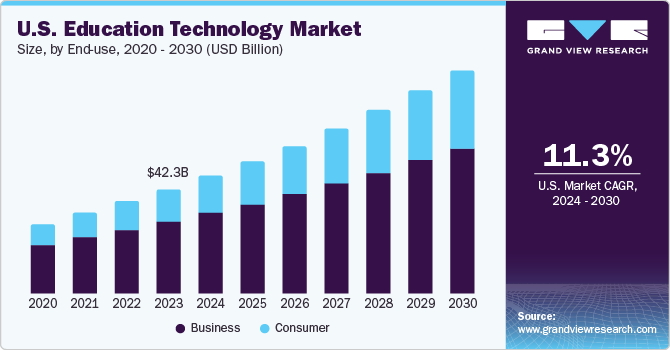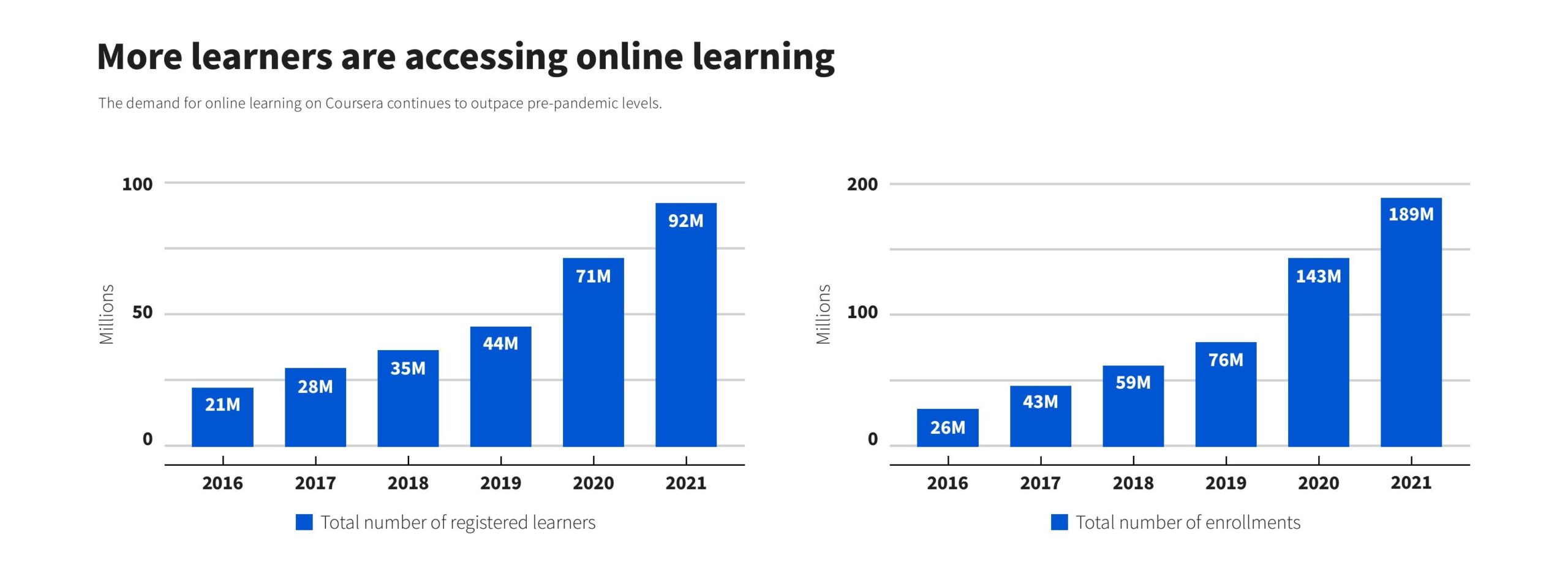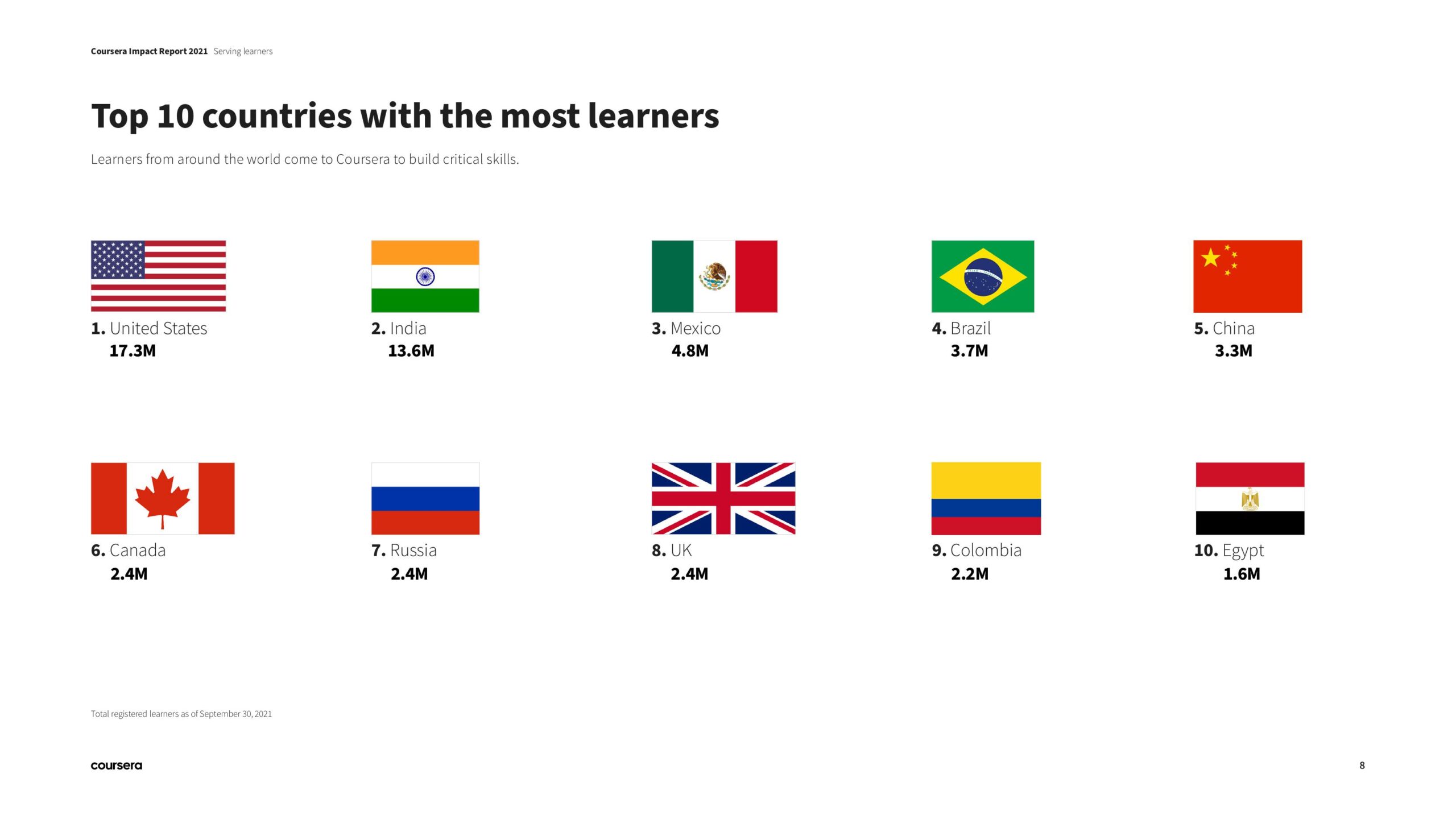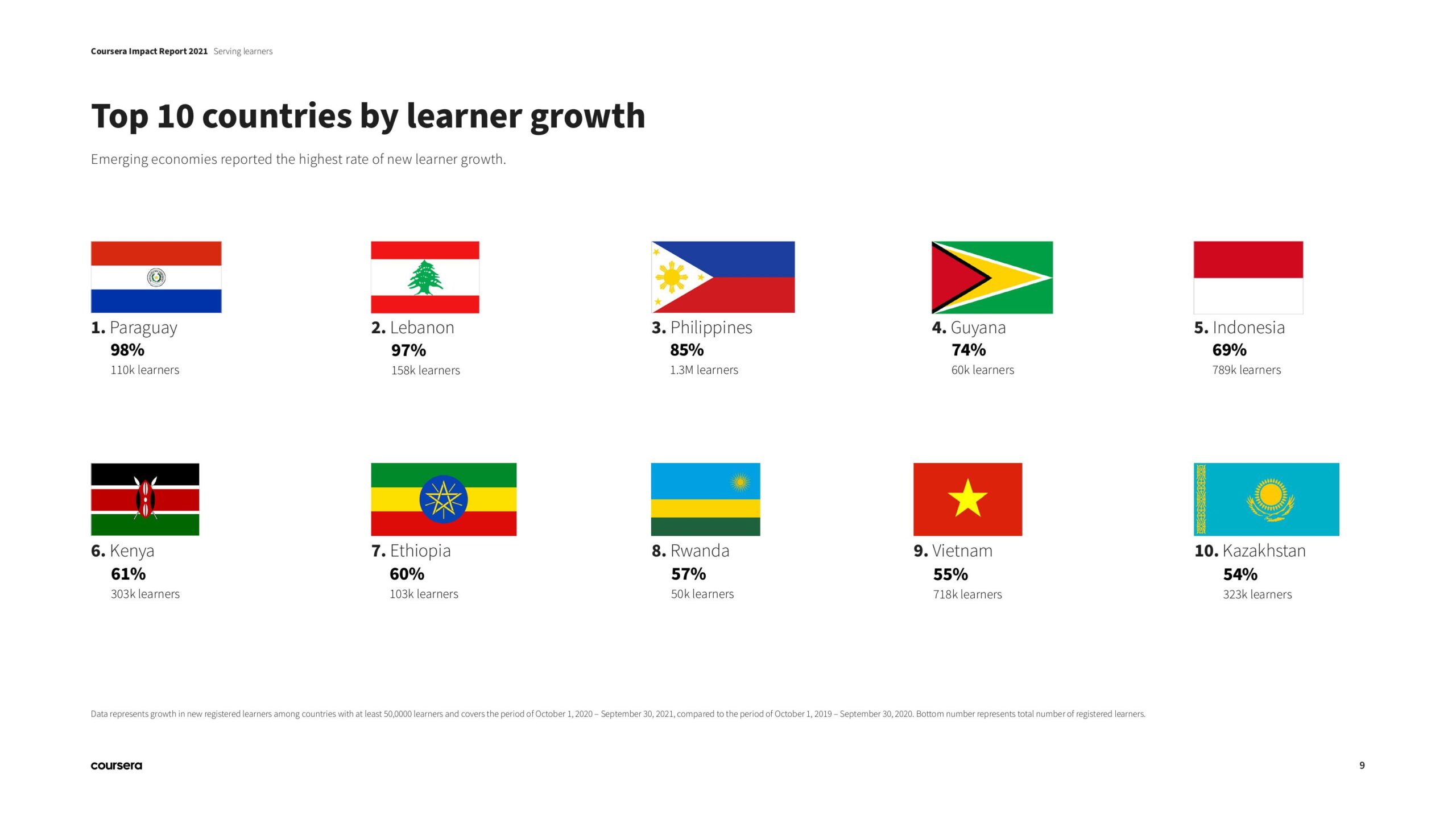
Contents
Educational technology, or EdTech, encompasses both hardware and software tools that facilitate virtual learning experiences. They enhance classrooms and improve student learning outcomes. The global education technology market size was estimated at USD 142.37 billion in 2023 and is expected to grow at a CAGR of 13.4% from 2024 to 2030.1 The EdTech market in North America constitutes nearly 37% of the global market, making it the largest in the world.2 The substantial market share can be attributed to the increased emphasis on personalized learning and the adoption of digital skills. Driven by numerous start-ups and established companies, the U.S. EdTech market is projected to grow at 11.3% CAGR from 2024 to 2030. Furthermore, the increased adoption of technology by schools and educators, coupled with a surge in investments, is improving learning outcomes within the education sector.

Figure 1: EdTech Market in the US (Source: Grand View Research)
Why is the EdTech industry Booming?
Digital content is cheaper to produce than printed content. They are easy to translate and accessible to a wider audience. Audio-visual content can improve vocabulary and reading comprehension, especially for learners with physical disabilities. EdTech solutions will evolve with emerging technologies like IoT, AI, and AR/VR, driving market growth. These technologies allow learners to explore and interact with abstract concepts without difficulty and subsequently drive student engagement. The use of animations, multimedia, audio, video, and graphics in tech-savvy smart classrooms enhances the teaching and learning processes for both teachers and students. This enhances student engagement and leads to improved academic performance.
Launched in February 2024, Academian Inc. is an education technology solutions provider that delivers state-of-the-art learning solutions and engaging experiences in educational technology for K-12, higher education, and workforce development programs. In March 2024, Macmillan Learning, a US-based digital learning company, launched a professional development institute that provides hands-on experience for educators to teach concepts of Gen AI to students in the future.
Leading EdTech companies often merge or acquire others to expand their market share, product offerings, customer base, and global reach. EdTech firms are acquiring smaller EdTech startups to integrate innovative technologies, such as adaptive learning tools and personalized learning programs.
Competitive Landscape of the EdTech Industry
The EdTech industry has no direct substitute but competes with traditional classroom learning. Traditional classrooms offer strengths in social interaction, direct teacher guidance, and hands-on activities. However, online learning has become a central component of the student experience, both on and off campus. Universities globally are integrating online learning into their curricula. By emphasizing skills and practical application, they are improving student employability. Since we are currently experiencing an unprecedented global skills crisis, students require new digital skills to secure employment. Organizations are aiming to address critical skill gaps, while governments are strategizing to reskill citizens.
End-user concentration strongly influences the EdTech industry, with businesses holding a major share. This concentration of corporate and educational institutions significantly impacts product development, pricing strategies, and overall industry growth. The consumer segment will grow due to increased awareness of digital education among parents and students, and the growing trend of lifelong learning among adults and corporate workers.
For an instance, Adobe, a global technology leader, sought to enhance its knowledge of artificial intelligence to better integrate the technology into its products. Due to the high demand for engineering talent throughout the technology sector, Adobe partnered with Coursera to provide its existing workforce with additional AI and machine learning training opportunities. The coursework allows engineers to better understand and apply AI and machine learning to Adobe products, delivering new features faster.
Find Your Perfect Software Outsourcing Partner
Unlock a world of trusted software outsourcing companies and elevate your business operations seamlessly.
Discover CompaniesGrowing Popularity of Online Learning Across the World
The rising popularity of online education can be attributed to several factors. They include the increasing prevalence of technology, as well as the enhanced accessibility, availability, and convenience it offers. Early in the pandemic, online learning became a critical component of the response to a global crisis that transformed the educational landscape. New trends demonstrate that the combined force of online learning and remote work is creating a powerful opportunity to provide not just skills but more equitable job opportunities worldwide. In 2021, over 92 million students registered in Coursera, making the total number of enrolled learners to 189 million.3

Figure 2: Increased enrollment in Coursera (Source: Coursera Impact Report 2021)
The adoption of technology and high-speed internet has fueled EdTech’s global expansion. Providing equitable access to high-quality learning opportunities is no longer an aspiration; it has become a tangible reality for learners worldwide.

Figure 3: Top 10 countries with the most learners in Coursera (Source: Coursera Impact Report 2021)
Coursera’s 2021 Impact Report highlights the top 10 countries with the most learners, led by the United States (17.3 million) and India (13.6 million). Emerging markets like Mexico, Brazil, China, and Egypt show significant participation, emphasizing the role of digital learning in skill development. Overall, the data underscores a global shift toward online education, particularly in developing regions.

Figure 4: Growth in newly registered learners in countries with 50,000+ learners between Oct 1, 2019 – Sep 30, 2020 (Coursera Impact Report 2021)
The report also highlights the top 10 countries by learner growth, with the highest increases seen in emerging economies. The data represents the increase in countries with at least 50,000 learners. This data spans from October 1, 2020, to September 30, 2021, and is compared to the period from October 1, 2019, to September 30, 2020. The number at the bottom indicates the total number of enrolled learners.’
Paraguay (98%) and Lebanon (97%) lead the list, showing a surge in online education adoption. The Philippines (85%) and Indonesia (69%) have the highest total learners among the top-growing nations, reflecting strong demand in Southeast Asia. African countries like Kenya, Ethiopia, and Rwanda show notable growth, emphasizing the role of digital education in skill-building. Kazakhstan (54%) and Vietnam (55%) also demonstrate increasing engagement. The data highlights that online learning is expanding rapidly in developing regions. Limited access to traditional education is increasing the demand for flexible, skill-based learning opportunities.
Conclusion
The EdTech industry is growing rapidly due to technological advancements and increasing digital adoption. The demand for flexible, skill-based learning solutions is also driving this expansion. The U.S. remains a dominant player in this evolving market, with strong investments and innovation shaping the future of education. The rise of AI, AR/VR, and adaptive learning tools is enhancing personalized learning experiences, improving engagement, and expanding educational accessibility. As online learning grows worldwide, the EdTech sector will help bridge global skill gaps. It will also play a key role in reshaping the future of education.
References
[1] Education Technology Market Size, Share & Trends Analysis Report By Sector ↩
[2] Education Technology | International Trade Administration ↩






